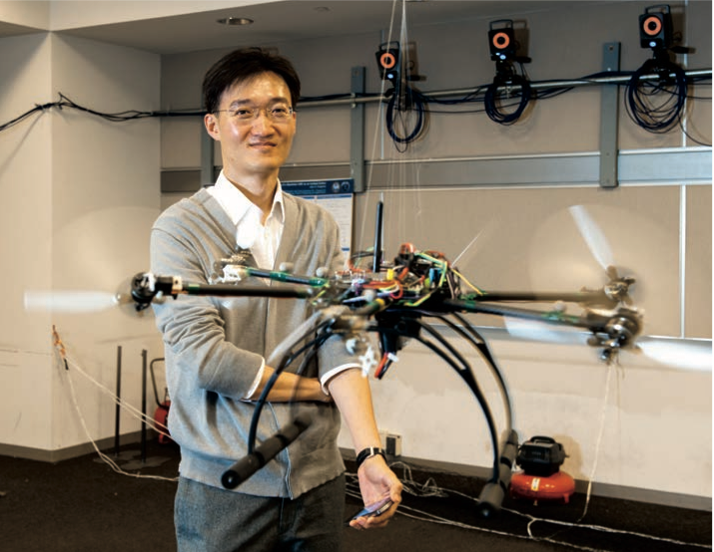Dr. Taeyoung Lee: Manifold Tasks

Professor Taeyoung Lee of the Department of Mechanical and Aerospace Engineering takes a unique approach to his research in dynamics and controls. “Engineers are used to thinking of systems in Cartesian coordinates, but many interesting mechanical or aerospace systems evolved on a curved space called a manifold,” he explains, noting that he opts to study dynamics and controls on a manifold.
Taking the example of spacecraft to illustrate the importance of his approach, Professor Lee explains that many people study spacecraft controls on a flat space to approximate the nonlinear space of attitudes, referred to as the special orthogonal group. That approach simplifies the problem but creates problems of its own. His approach, on the other hand, uses a host of tools from differential geometry and applied mathematics to look at the curved space as it is, without using any approximation.
One of his current research projects looks at transporting a payload by several unmanned aerial vehicles (UAVs). This has both military and commercial applications (think Amazon drones), but the dynamic coupling between the UAV and the payload needs to be better understood if the UAV is to transport a payload through complex trajectories. For military operations, the UAV may need to fly low to the ground to avoid enemy detection, so it must be able to navigate through dense vegetation. In commercial applications, it may need to navigate urban environments and avoid crashing into buildings or pedestrians.
Most UAV-payload research ignores the dynamic coupling between the drone and the payload in the configuration manifold, and, as a result, the drone is limited to following a straight trajectory fairly slowly. However, Professor Lee says, “My research is to study nonlinear control for a complete dynamic model of a payload and drone and the string connecting them such that we can transport the payload aggressively and through complex trajectories.”
According to Professor Lee, research of this kind is done primarily in math departments, and mathematicians generally “don’t have a strong interest in the spacecraft or aircraft or a good sense of the dynamics,” he says. “It’s very hard to find someone in an engineering department doing this.”
He notes that interdisciplinary research of this type can be fairly slow going, so the challenge is to remain focused and consistent. From all appearances, however, his research isn’t proceeding slowly at all. In fact, he’s been at SEAS just three years and already has received three separate National Science Foundation grants and has been selected to work two summers at the Air Force Research Lab. His monographs in geometric mechanics will be published in the next year, as well.

